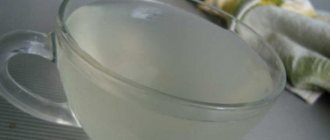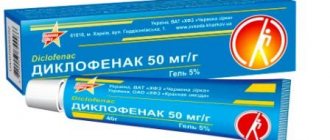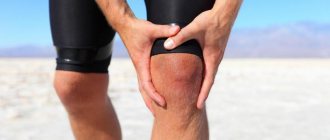Shockwave therapy is a very effective treatment for a variety of orthopedic conditions. Ultrasound therapy uses pulses of mechanical energy that travel as waves through tissue. Shock wave therapy affects the affected areas of the body. SWT was first used in lithotripsy. Focused shock waves made it possible to destroy kidney stones (without surgery). But since the 90s, shockwave therapy has become widely used to treat pain associated with various orthopedic conditions, including injuries to the knee joint. This joint is most often susceptible to various injuries and degenerative conditions. SWT of the knee is one of the most effective, conservative methods of treating diseases of the knee joint.
Mechanism of action
Extracorporeal shockwave therapy is focused shockwave therapy applied externally. With this method of treatment, the energy of the waves is transmitted locally, to the diseased part of the body, where the main source of pain is located. Immediately after exposure to shock waves, the blood flow in the tissues sharply increases in the affected area.
The most important therapeutic effects achieved with shock wave therapy are:
- stimulation of regenerative processes in tissues
- stimulation of collagen synthesis
- reduction of muscle tension
- destruction, with further dissolution, of calcified fibroblasts
- pain reduction
- mechanical stimulation
- increased local blood flow
- increased cellular activity - release of substance P, prostaglandin E2, NO, TGF β, VEGF and other inflammatory cytokines
- transient analgesic effect on afferent nerves
- destruction of calcifications (most often in tendons)
What is ultrasound therapy?
Ultrasonic waves are mechanical vibrations outside the range of human hearing, with a frequency of more than 20 kHz. Physiotherapy uses frequencies from 800 to 3000 kHz. The higher the frequency, the less penetration of waves into the body. In addition, the speed of propagation of ultrasonic waves in a solid medium is higher than in a liquid medium. The intensity of the impact changes in W/cm2. In practice, it is conventionally divided into:
- small - 0.05–0.4 W/cm2;
- average—0.6–0.8 W/cm2;
- high—1.0–1.2 W/cm2.
Ultrasonic waves cause periodic vibrations of tissues, their expansion and collapse. They can be thought of as micromassages.
In arthrology, when using ultrasound on large joints of the legs, for example, the knee, ankle, hip, low intensity waves of 0.4–0.6 W/cm2 are used.
The impact is carried out by devices containing crystals of quartz, barium, etc., which, under the influence of alternating electric current, create waves of the required frequency and intensity. Therapy is carried out in pulse mode.
Since ultrasound waves do not penetrate well through the air, special gels and solutions are used to contact the sensor with the skin; there is also a method of exposure in a liquid medium. The affected area is immersed in baths of water, which evenly distributes the action of the waves over an uneven surface. For example, this is how diseases of small joints of the hand and foot are treated.
Another method of application is ultraphonophoresis of drugs. This technique combines the use of medications and ultrasound. Since ultrasound waves increase the permeability of membranes, drugs that are used instead of contact lubricants penetrate the skin barrier better. They form a depot in tissues, which ensures long-lasting effects.
In addition, some medications in large dosages have adverse effects on the body (side effects), and the use of ultraphonophoresis can significantly reduce the dose administered orally in the form of tablets and injections. For example, for arthritis and arthrosis of the knee joint, a course of ultrasound with hydrocortisone is a very effective remedy.
Jumper's knee
The quadriceps femoris muscles are connected to the lower part of the lower leg by a tendon called the patella. In the middle of the patellar tendon is the kneecap. With increased load on the knee (when jumping, turning or suddenly changing the direction of movement), pain occurs in the knee joint, above and below the patella. The pain is associated with microscopic tears in the patellar tendons. Thus, the jumper's knee begins to develop.
Tears in the tendons heal, but instead of elastic collagen fibers, scar tissue forms. In such cases, the use of extracorporeal shock wave therapy gives a good result. Sound waves penetrate to a certain depth and cause tissue vibrations at the microscopic level. Normal healthy tissue reacts to this impact as if it were a deep massage, but fragile, forming scar tissue cannot withstand the action of the waves and is destroyed.
What are the contraindications for ultrasound therapy?
Currently, ultrasound treatment of joints is one of the most popular methods of modern restorative medicine.
Among the contraindications to the use of ultrasound therapy of joints, experts usually mention menopause, the presence of fibromyotic changes, atherosclerosis and mastopathy, as well as some other factors. This procedure is not performed in the presence of synovitis
. It is prohibited to use ultrasonic waves on people with heart rhythm disturbances, bradycardia and other heart pathologies.
X-ray therapy of joints Treatment of coronary heart disease
Osteoarthritis of the knee joint
Osteoarthritis of the knee is a condition in which cartilage degenerates and bone tissue remodels. In severe forms of arthrosis, cartilage tissue disappears and bones rub against each other.
Extracorporeal shock wave therapy helps break up old adhesive formations in the knee joint and triggers angiogenesis (proliferation of blood vessels). This process develops in the joint itself, as well as in the muscles, tendons and ligaments surrounding the joint. Excess bone growths are also destroyed. As a result, after SWT procedures, mobility increases and pain decreases.
Treatment of joints using ultrasound
As you know, the main factors causing joint diseases are all kinds of injuries, fractures, dislocations and sprains. Excessive physical stress on the joint can cause deformation of the articular elements, microcracks in the cartilage and bones. Some concomitant diseases (for example, rheumatoid arthritis, ankylosing spondylitis or gout) can provoke inflammatory processes in the joints. Metabolic disorders have a negative impact on the condition of the cartilage tissue of the joints.
Ultrasound therapy helps to increase blood supply to the joints, normalize metabolic processes, and also prevent further degenerative changes in articular cartilage. Here you can add relief from pain and reduction of inflammation. In many cases, ultrasound therapy helps avoid joint deformation.
This therapy is used both as an independent method and in combination with other procedures. The best effect is achieved by combining ultrasound and drug treatment. This technology makes it possible to combat joint pathologies such as various types of arthritis
(infectious, traumatic, dystrophic, etc.) and
arthrosis
(gonarthrosis, coxarthrosis, etc.). In addition, ultrasound therapy of joints is also used in the treatment of all kinds of injuries and bruises.
Iliotibial tract syndrome (runner's knee)
The tensor fascia lata is located on the lateral surface of the thigh and connects to the ilium by the iliotibial ligament (tract). This ligament connects to the bottom of the leg and helps the knee stabilize when a person lifts the opposite leg. This ligament acts like a knee brace. When the muscles attached to the IT tract become tense due to the presence of trigger points or scar changes occur in the ligament, it begins to rub the outer part of the knee.
SWT for IT syndrome (runner's knee) leads to:
- Increasing ligament flexibility
- Elimination of myofascial trigger points
- Improving knee mechanics
- Significant reduction in pain
Indications and contraindications for ultrasound treatment of joints
Ultrasound waves are used to treat inflammatory, degenerative processes of the musculoskeletal system, indications for use are:
- arthrosis;
- arthritis of various etiologies;
- injuries, intra-articular fractures;
- dystrophic tendinosis;
- muscle contractures;
- heel spur;
- gouty tophi;
- rehabilitation after joint surgery.
Contraindications to ultrasound treatment of joints are:
- acute inflammatory and infectious diseases;
- cardiovascular diseases (angina pectoris, arrhythmia, hypertension);
- blood diseases;
- thrombophlebitis;
- neuroses, psychopathy;
- some endocrine pathologies (thyrotoxicosis);
- malignant neoplasms.
Physiotherapy is also not prescribed during pregnancy and for children under 5 years of age, as this may affect growth plates.
Contraindications and precautions
- Caution should be exercised in the area of the epiphyses
- Patients with hemophilia or those on anticoagulant therapy should not undergo shock wave therapy because complications such as bruising or bleeding may occur.
- Malignant neoplasms are a contraindication for SWT, since shock waves can accelerate the spread of malignant tissue.
- Metal implants should not be in the affected area.
- Infections in the affected area can lead to the spread of pathogenic flora.
- Joint endoprostheses - treatment with shock wave therapy has high risks.
How effective is ultrasound therapy?
It has long been known that certain doses of ultrasound can dilate blood vessels and improve blood circulation; they can also have an anti-inflammatory, absorbable, antispastic and analgesic effect. By influencing connective tissue with ultrasound, it is possible to achieve regeneration and rejuvenation of body tissues: thus, ultrasound affects excess connective tissue by smoothing out the scar.
The thermal effect of ultrasound can also be noted, which provides its warming effect. In addition, exposure to ultrasound creates a micromassage effect at the cellular level, improves the absorption of all kinds of ointments and gels containing medications into the skin, increases the permeability of the cell membrane and accelerates cellular diffusion.
This therapy reduces the sensitivity of receptors
, which means it provides an analgesic effect.
Ultrasound for joints: benefits and harms
What is the benefit of ultrasound for joints, and what harm can it cause? Ultrasound is absolutely harmless to the body, so it is used for ultrasound examinations even in children and pregnant women. But local, intense, high-intensity exposure may have adverse effects in some diseases. Therefore, when prescribing physiotherapy, contraindications should be taken into account.
The benefits of ultrasound joint physiotherapy are that it:
- improves metabolic processes;
- increases the permeability of cell membranes;
- stimulates the formation of biologically active substances
- reduces the viscosity of synovial fluid;
- increases the content of hyaluronic and chondroitic acid in the intraarticular fluid;
- activates local blood circulation and lymphatic drainage;
- relieves muscle tension
- reduces pain;
- has an anti-inflammatory effect.
These effects are actively used in the treatment of arthrosis, arthritis, and recovery from joint injuries with ultrasound.
A course of ultrasound physiotherapy is an effective, simple and affordable method of treating diseases of the musculoskeletal system. According to patient reviews, ultrasound helps with knee pain, relieves inflammation and swelling, and restores motor activity after 2-3 procedures. A course of treatment for the chronic course of the disease helps to get rid of pain for several months.











